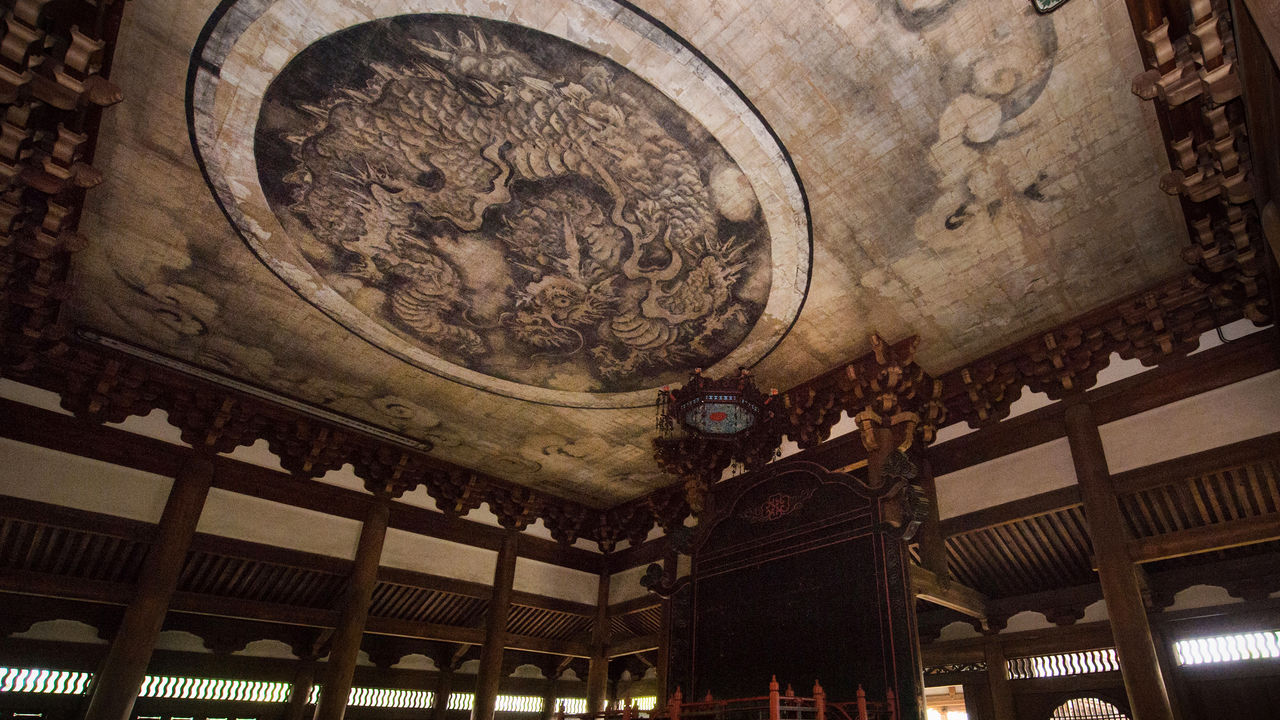
A Special Viewing of National Treasures at Kyoto’s Daitokuji
Guideto Japan
- English
- 日本語
- 简体字
- 繁體字
- Français
- Español
- العربية
- Русский
Oda Nobunaga’s Final Resting Place
From the Kyoto JR Station take the Kyoto municipal subway Karasuma line to Kitaōji and transfer to a Kyoto city bus to get to Daitokuji at the northern edge of the city. The head temple of the Rinzai sect of Zen Buddhism, Daitokuji is surrounded by a vast complex of subtemples and residences for monks and abbots, including such well known temples as Ryōgen-in, Ōbai-in, and Shinjuan.
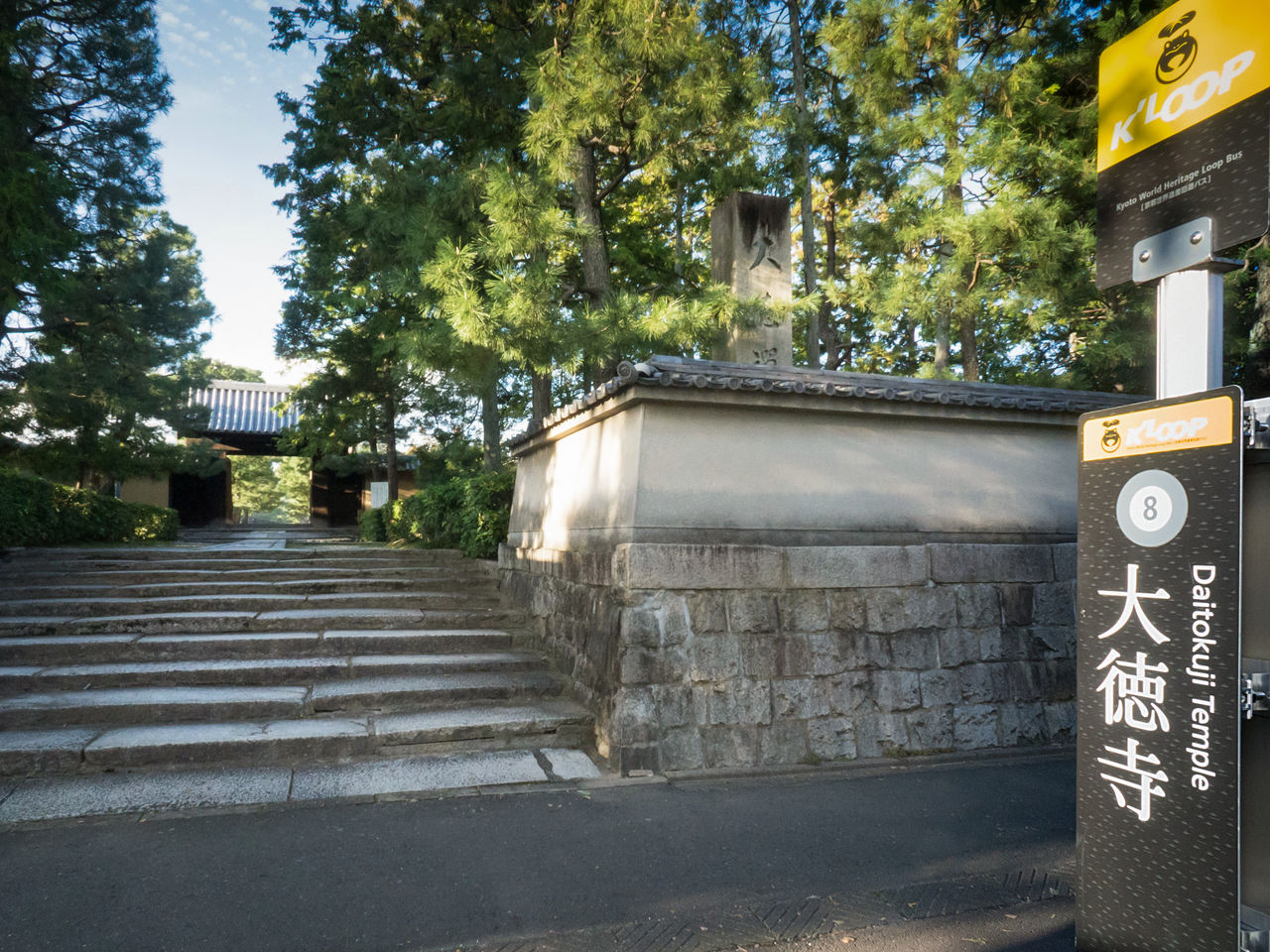 The Daitokuji bus stop for the K’Loop sightseeing bus and municipal bus lines is located on Kitaōji avenue, right in front of the south gate to the complex.
The Daitokuji bus stop for the K’Loop sightseeing bus and municipal bus lines is located on Kitaōji avenue, right in front of the south gate to the complex.
Daitokuji was founded in 1315 by the Zen monk Daitō Kokushi (also known by the name Shūhō Myōchō). The temple flourished under the patronage of the emperors Go-Daigo (1288–1339) and Hanazono (1297–1348) but fell into disrepair after numerous fires and the devastation of the 1467–77 Ōnin War. It was Ikkyū Sōjun (1394–1481), the eccentric Zen monk beloved for his wit and unconventional ways, who restored the temple to its former glory.
In 1582, the hegemon Toyotomi Hideyoshi (1537–98) chose Daitokuji as the setting for a lavish funeral for Oda Nobunaga (1534–82), who had been assassinated at Honnōji. On the first anniversary of Nobunaga’s death, Hideyoshi further cemented his position as Nobunaga’s legitimate successor by building Sōken-in, a mortuary temple for his former lord. He later donated the temple and its grounds to Daitokuji. Others who had once fought under Nobunaga, such as Maeda Toshiie (1538–99) and Hosokawa Tadaoki (1563–1646), soon followed suit.
The practice of building subtemples was continued in the early Edo period by the Daitokuji abbot Takuan Sōhō (1573–1646). After the Meiji Restoration of 1868, Daitokuji lost many of its subtemples, but to this day the complex still covers a large expanse encompassing two branch temples and 22 subtemples.
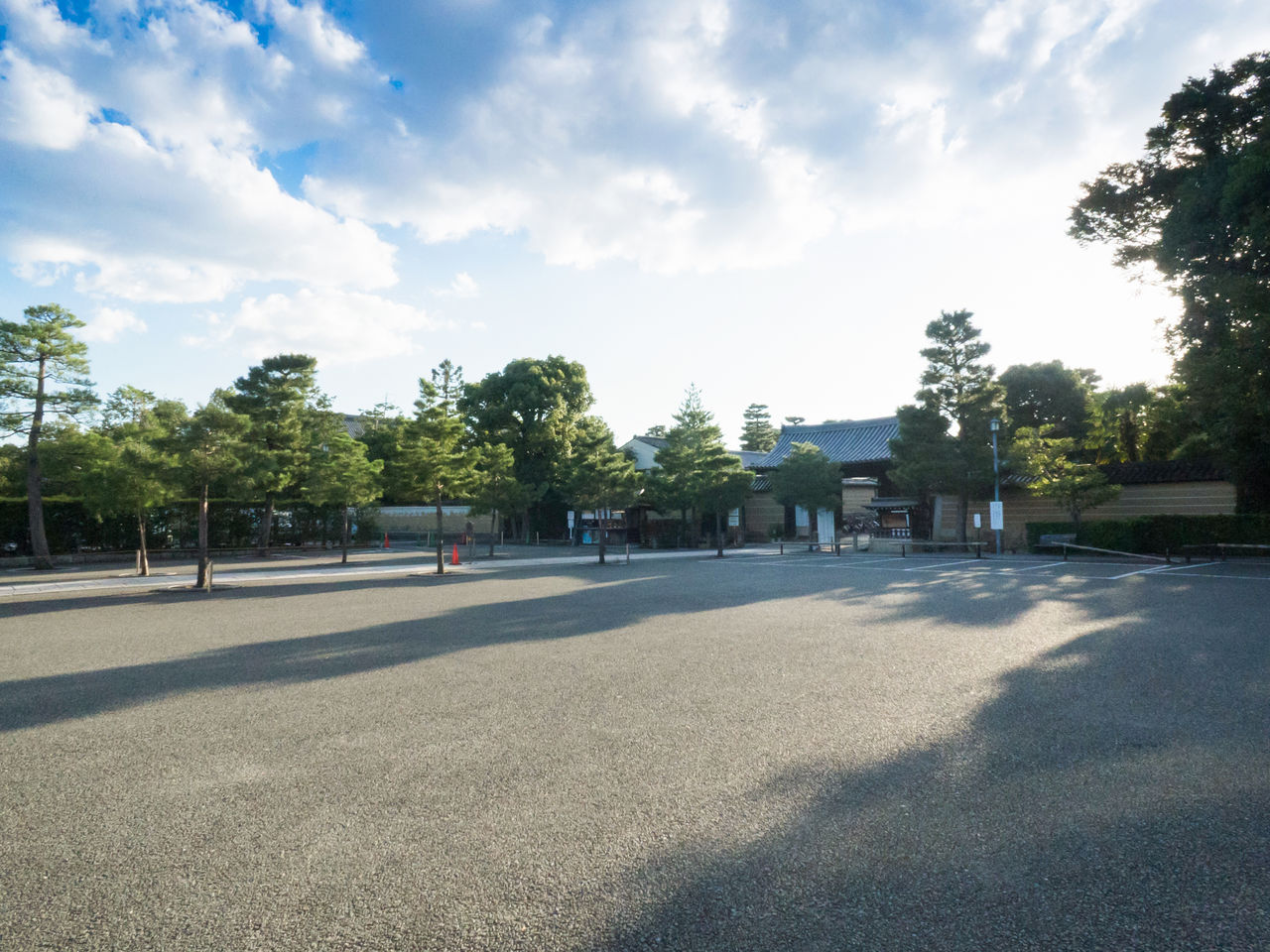 The main gate on the east side of the complex is fronted by a spacious parking area for large tour buses.
The main gate on the east side of the complex is fronted by a spacious parking area for large tour buses.
Daitokuji’s Cloistered Honbō
Much of the Daitokuji complex is open to the public and affords a pleasant place for peaceful walks. Visitors are welcome at some of the subtemples, including Ryōgen-in, the oldest sub-temple in the complex, Kōtō-in, dedicated to the Hosokawa family, and Daisen-in, famous for its karesansui dry landscape garden. Many of the subtemples, however, are closed to the public, as is Daitokuji’s Honbō, which includes the temple abbot’s residence and accompanying structures. Here we will introduce some of the features of this part of Daitokuji that can only be seen during the special opening.
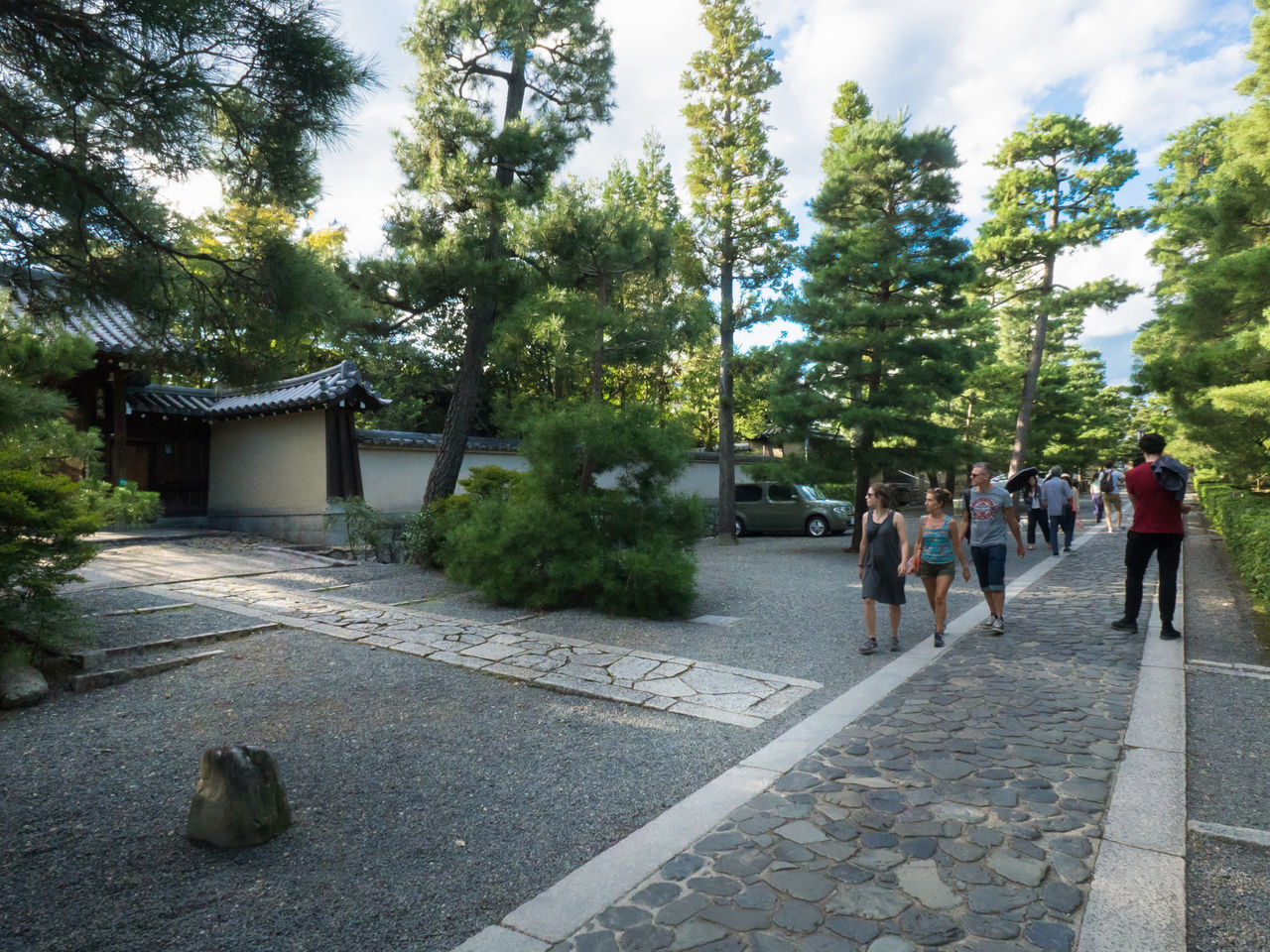 Tourists stroll through the spacious Daitokuji grounds.
Tourists stroll through the spacious Daitokuji grounds.
The Daitokuji Honbō encompasses the Chokushimon and Sanmon gates at the south end of the complex and extends in a straight line from there to the Butsuden sanctuary and the lecture hall. All of these structures are representative of the Zen Buddhist architecture introduced from China and are designated Important Cultural Properties. Further in is the kuri, the temple kitchen and monks’ living quarters, and beyond that the abbot’s chambers and a magnificent gate, both designated national treasures. There is as well the renowned Hōjō garden.
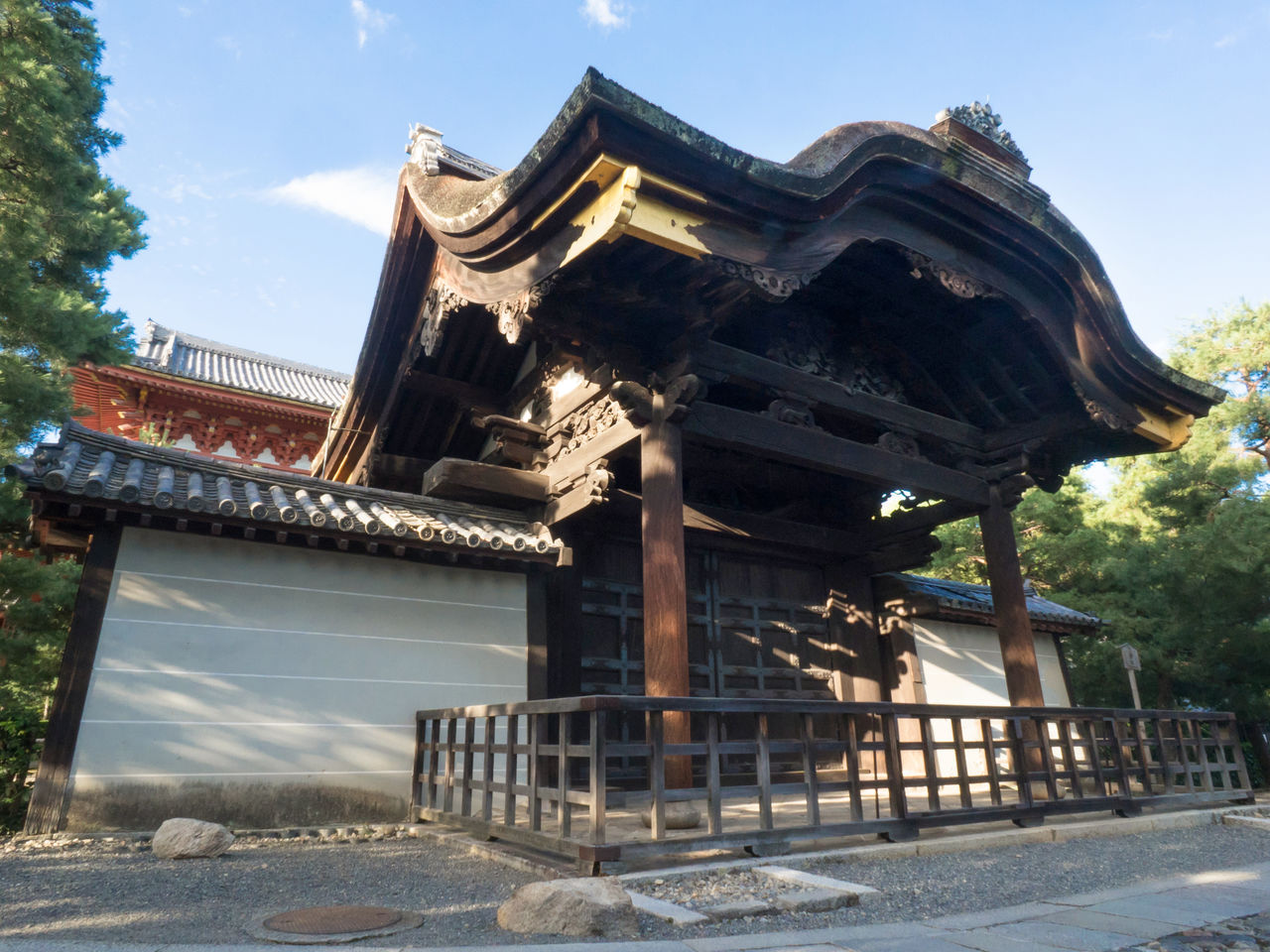 The Chokushimon gate for imperial envoys, an important cultural asset, can be viewed from the walkway to the temple.
The Chokushimon gate for imperial envoys, an important cultural asset, can be viewed from the walkway to the temple.
The Honbō is a treasure trove of paintings by the great early Edo period painter Kanō Tan’yū (1602–74). Notable is the Unryūzu, a painting of a glaring dragon and clouds on the ceiling of the lecture hall. Stand immediately under the painting and clap your hands to hear the wail of the dragon echo throughout the hall.
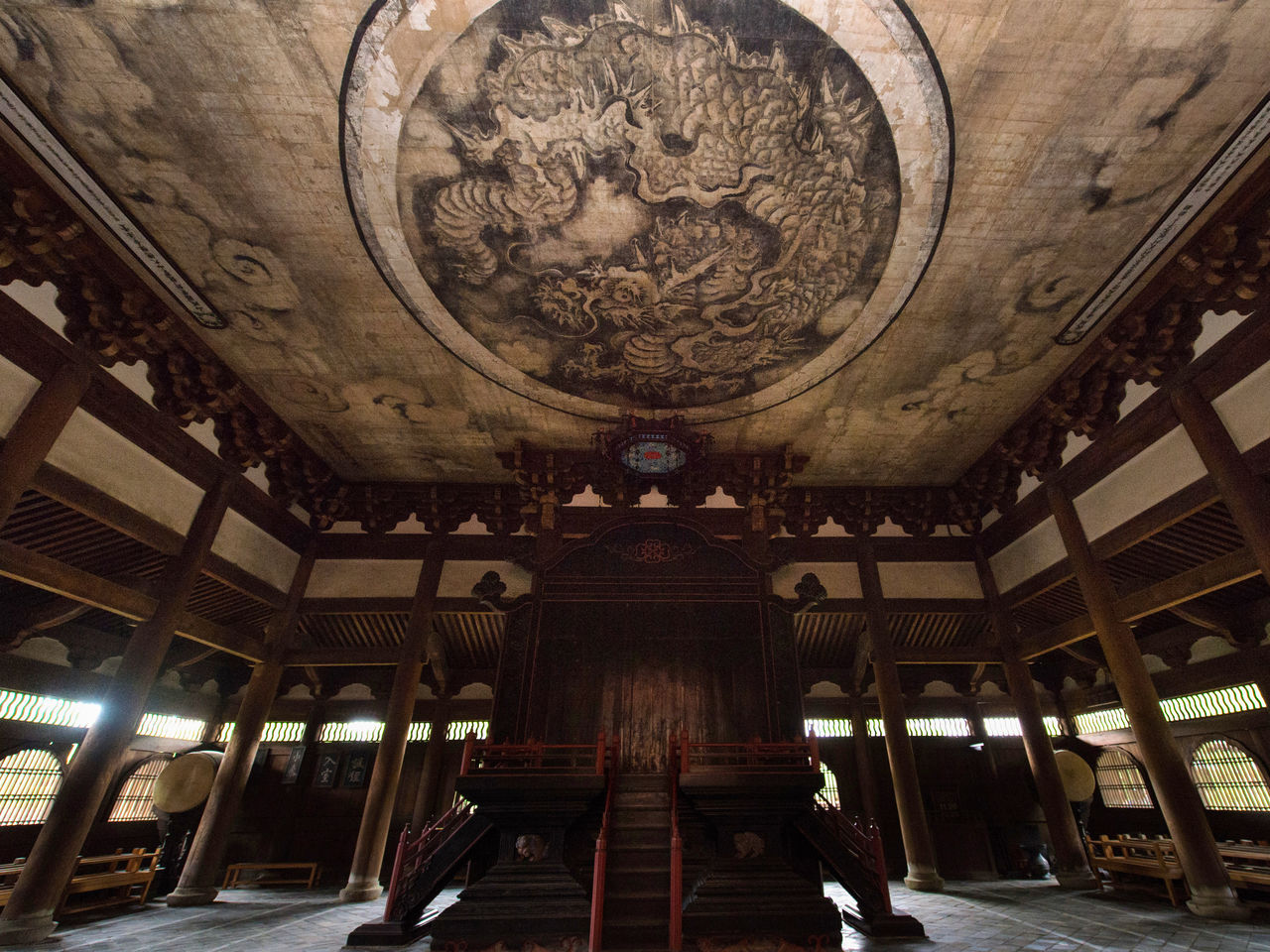 Tan’yū is said to have been just 35 years old when he painted the Unryūzu.
Tan’yū is said to have been just 35 years old when he painted the Unryūzu.
Dragons were a popular motif for temple ceilings because they represent a water deity and were thought to act as a talisman against fire. For the same reason, the walls of the lecture hall are covered with lovely wooden latticework representing flowing water.
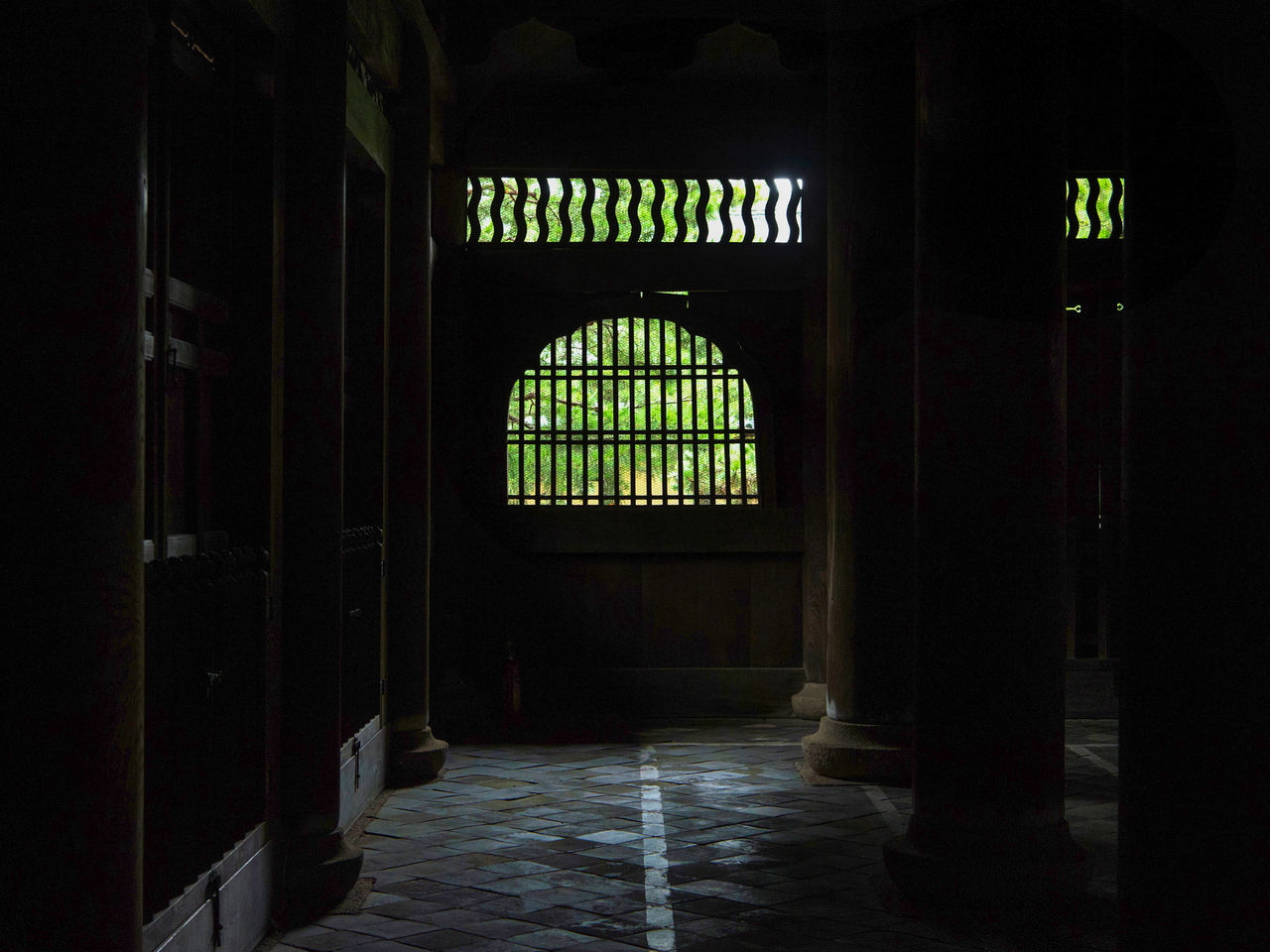 The wavy lines of the ranma transom at the top represent water and were meant to protect the building against fire.
The wavy lines of the ranma transom at the top represent water and were meant to protect the building against fire.
The abbot’s chambers is made up of rooms divided by 84 fusuma sliding doors bearing ink paintings by Tan’yū. The central inner chamber has 16 fusuma doors covered with a sparse landscape painting. The restrained depiction adds depth and openness to the room.
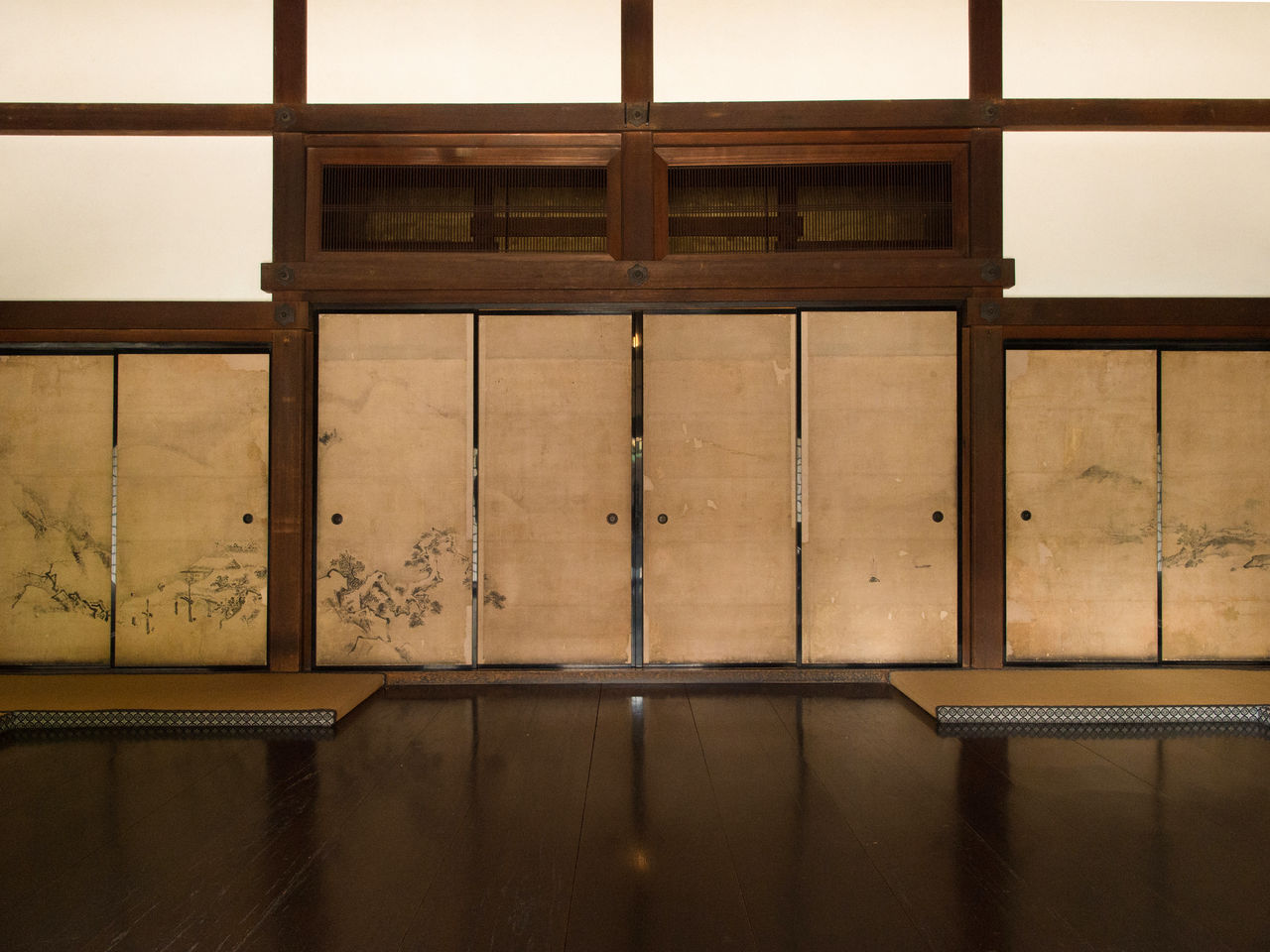 The reserved landscape painting on the fusuma of the central abbot’s chamber.
The reserved landscape painting on the fusuma of the central abbot’s chamber.
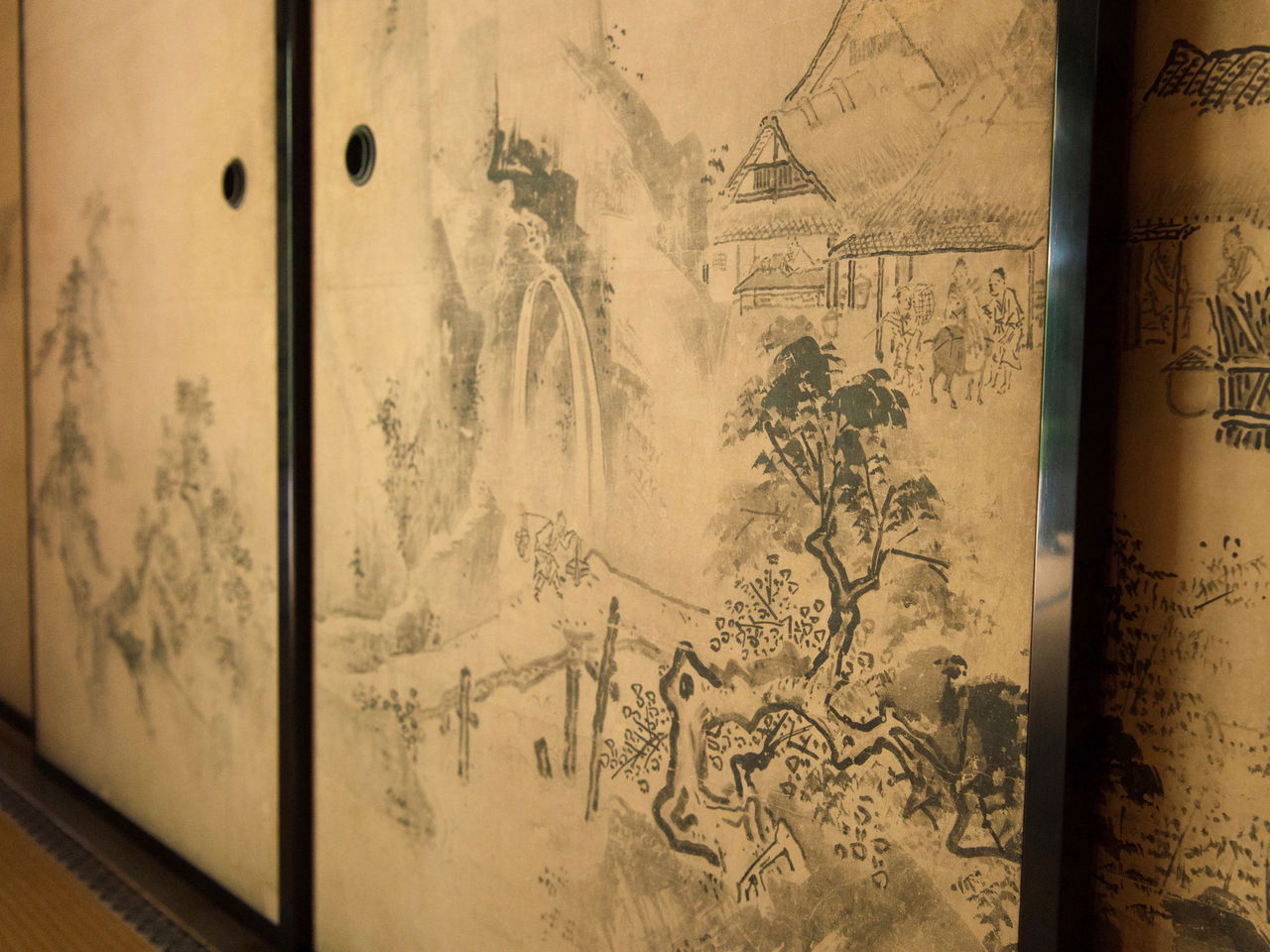 The contrast of dark and light brush strokes adds depth to the painting.
The contrast of dark and light brush strokes adds depth to the painting.
The Daily Life of Monks Amid National Treasures
In a typical temple, the abbot’s chambers consist of six rooms, three on the south side and three on the north side of the building, but the Daitokuji chambers are unusual, boasting four rooms to the south and four to the north.
Daitō Kokushi, the founder of Daitokuji, left explicit instructions that no mortuary subtemple was to be built in his honor after his death. His disciples complied and instead added an annex to the abbot’s chambers consisting of two rooms known as the Unmon-an, one of which holds a wooden statue of Daitō Kokushi seated in meditation.
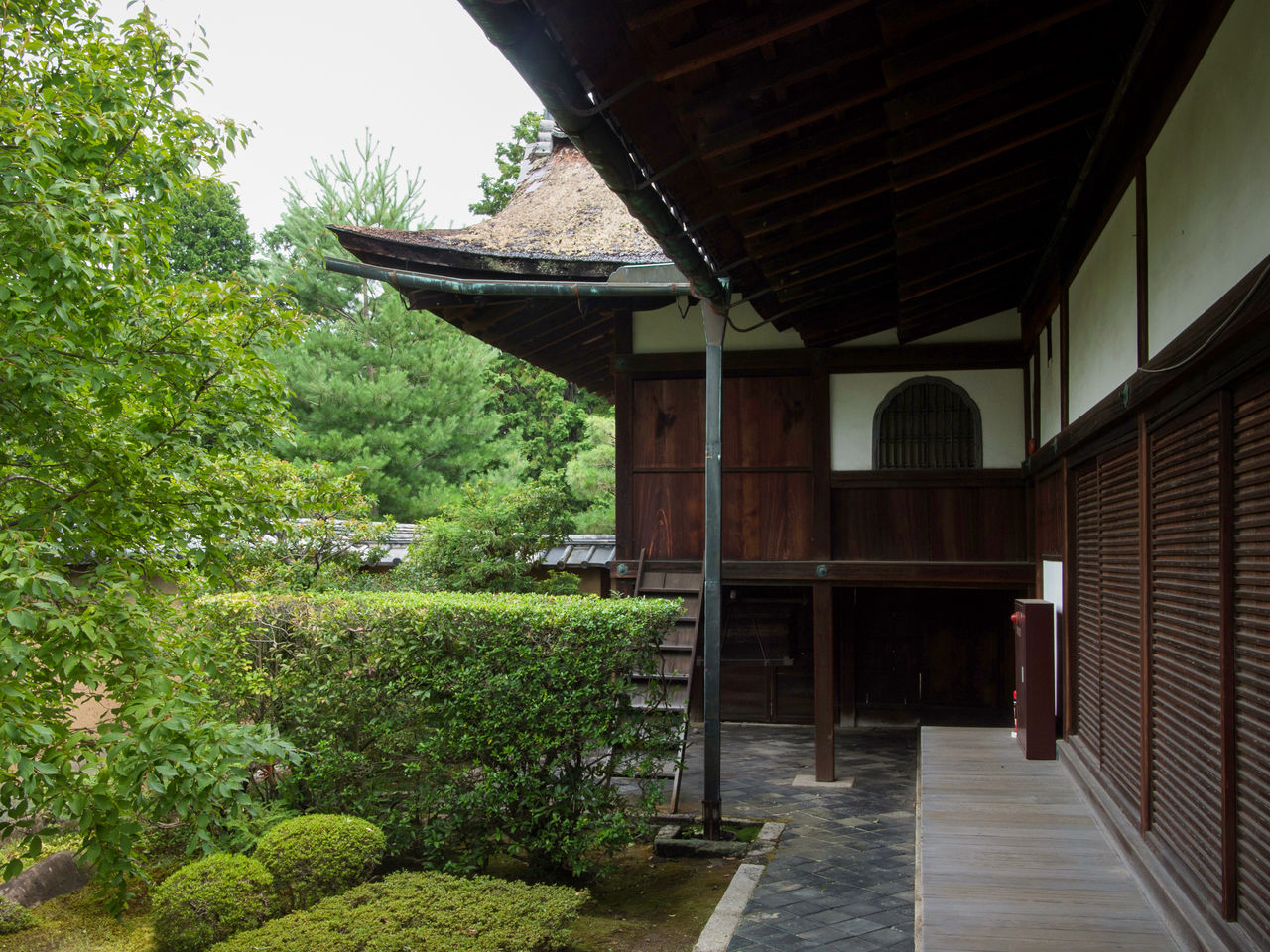 The Unmon-an annex dedicated to Daitokuji’s founder is a part of the abbot’s quarters.
The Unmon-an annex dedicated to Daitokuji’s founder is a part of the abbot’s quarters.
The Hōjō garden is a designated place of special scenic beauty, a karesansui dry landscape garden of sand carefully raked to represent the ripples of flowing water. The Chinese-style Karamon gate to the south of the garden—another of Daitokuji’s national treasures—is said to have been relocated from Hideyoshi’s lavish Jurakudai residence in Kyoto. The Toyotomi family crest, a stylized paulownia seal with a 5-7-5 petal arrangement, can be found under the gate’s gabled roof.
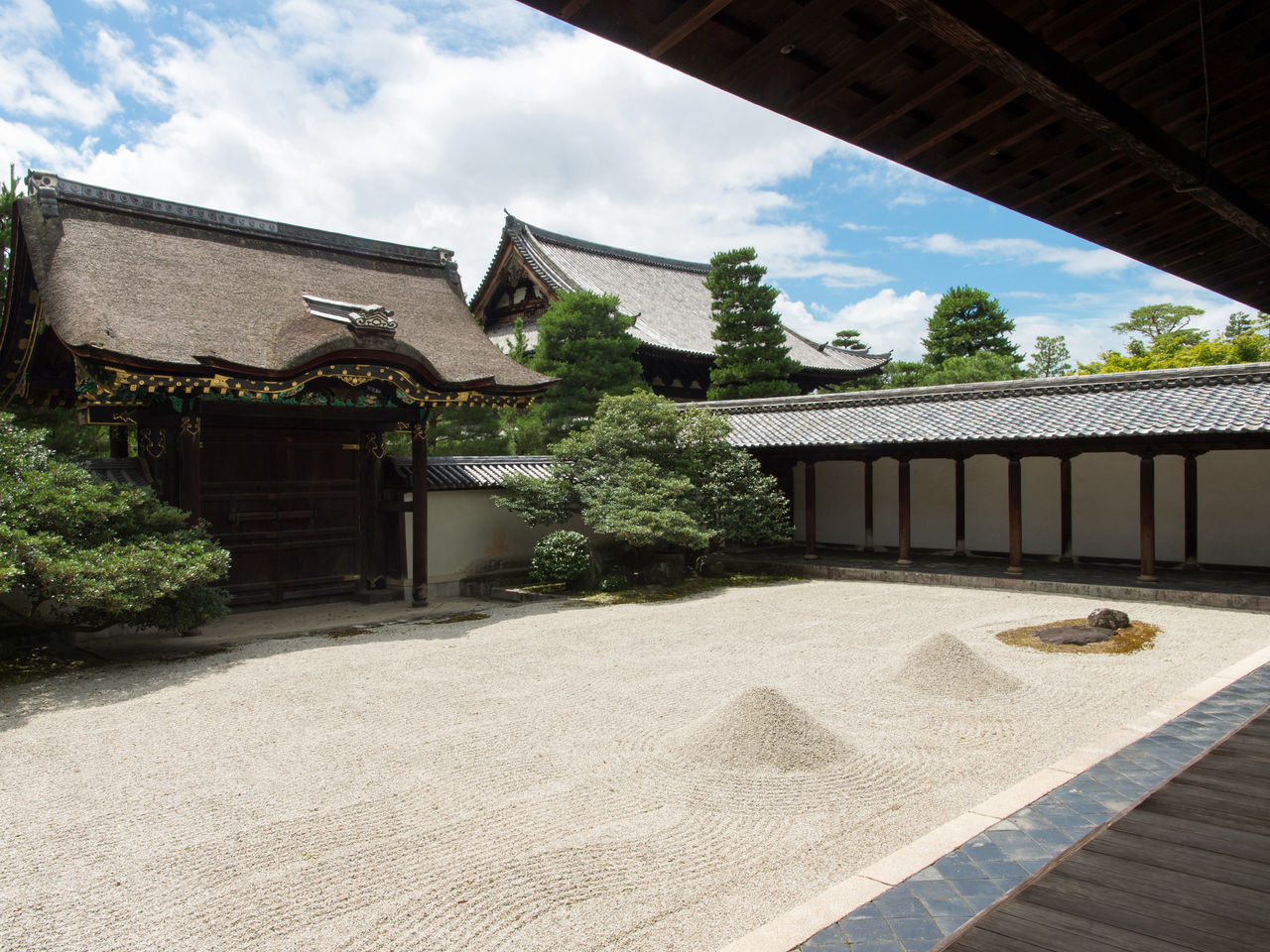 Daitokuji’s Hōjō garden is a designated place of scenic beauty and historical importance. In the background to the left is the Karamon gate, a designated national treasure.
Daitokuji’s Hōjō garden is a designated place of scenic beauty and historical importance. In the background to the left is the Karamon gate, a designated national treasure.
The gate is replete with exquisite sculptures, such as the Kara-jishi lions under the eaves on either side. Another name for the elegant gate is Higurashimon, meaning one could stand and admire it all day to sunset.
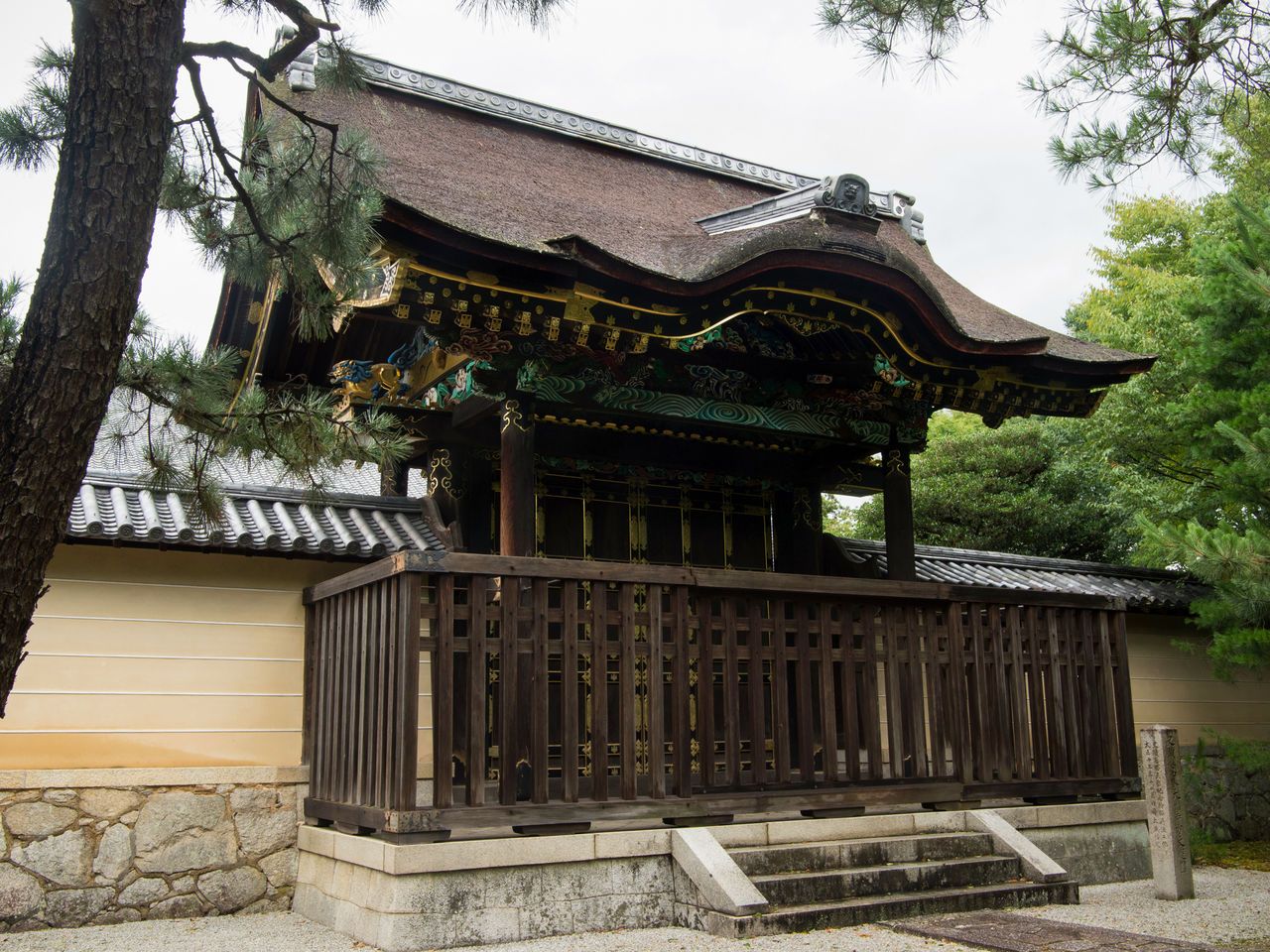 The Karamon gate viewed from outside the garden.
The Karamon gate viewed from outside the garden.
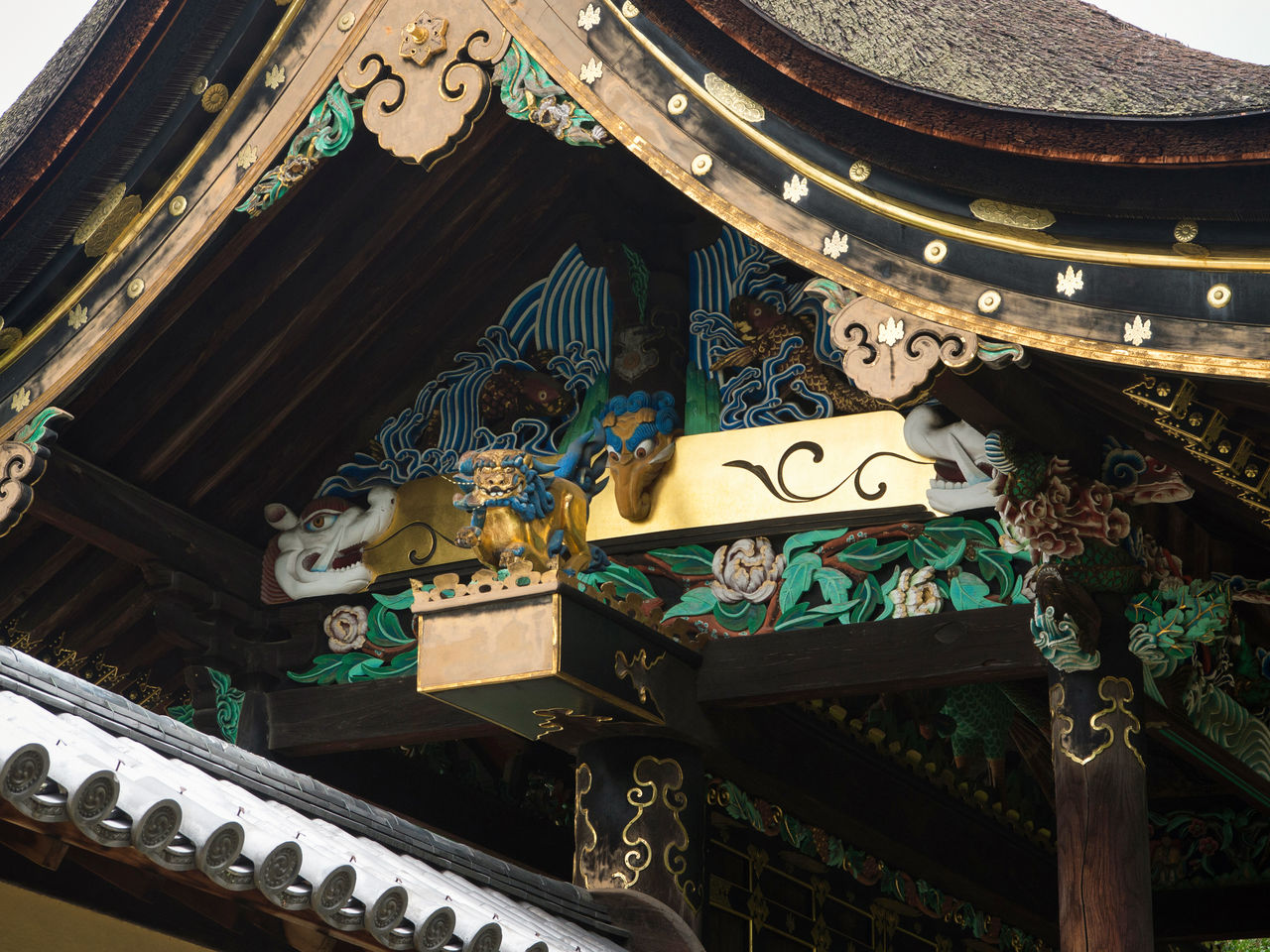 The crest of the Toyotomi family can be seen in numerous places under the gate’s eaves. The strange, long-nosed creature behind the shishi lion is a baku, a creature from Chinese myth. To either side of the shishi lion are white-faced, fanged creatures, mythical shape-shifting dragons known as shin (shen in Chinese).
The crest of the Toyotomi family can be seen in numerous places under the gate’s eaves. The strange, long-nosed creature behind the shishi lion is a baku, a creature from Chinese myth. To either side of the shishi lion are white-faced, fanged creatures, mythical shape-shifting dragons known as shin (shen in Chinese).
There are many other treasures to be found inside the Daitokuji Honbō. For example, placed unceremoniously in a corner of the floored space connecting the abbot’s quarters to the kuri monks’ quarters is an iron kettle used at the famous Daitokuji tea party hosted by Hideyoshi himself. This was a lavish affair, said by some to have been a celebration of Hideyoshi’s newly acquired title of Kanpaku, and by others to have been an event commemorating Nobunaga. The table and chairs placed in the center of the open space were prepared especially for a visit by the Empress Teimei (1884–1951), consort of Emperor Taishō (1879–1926).
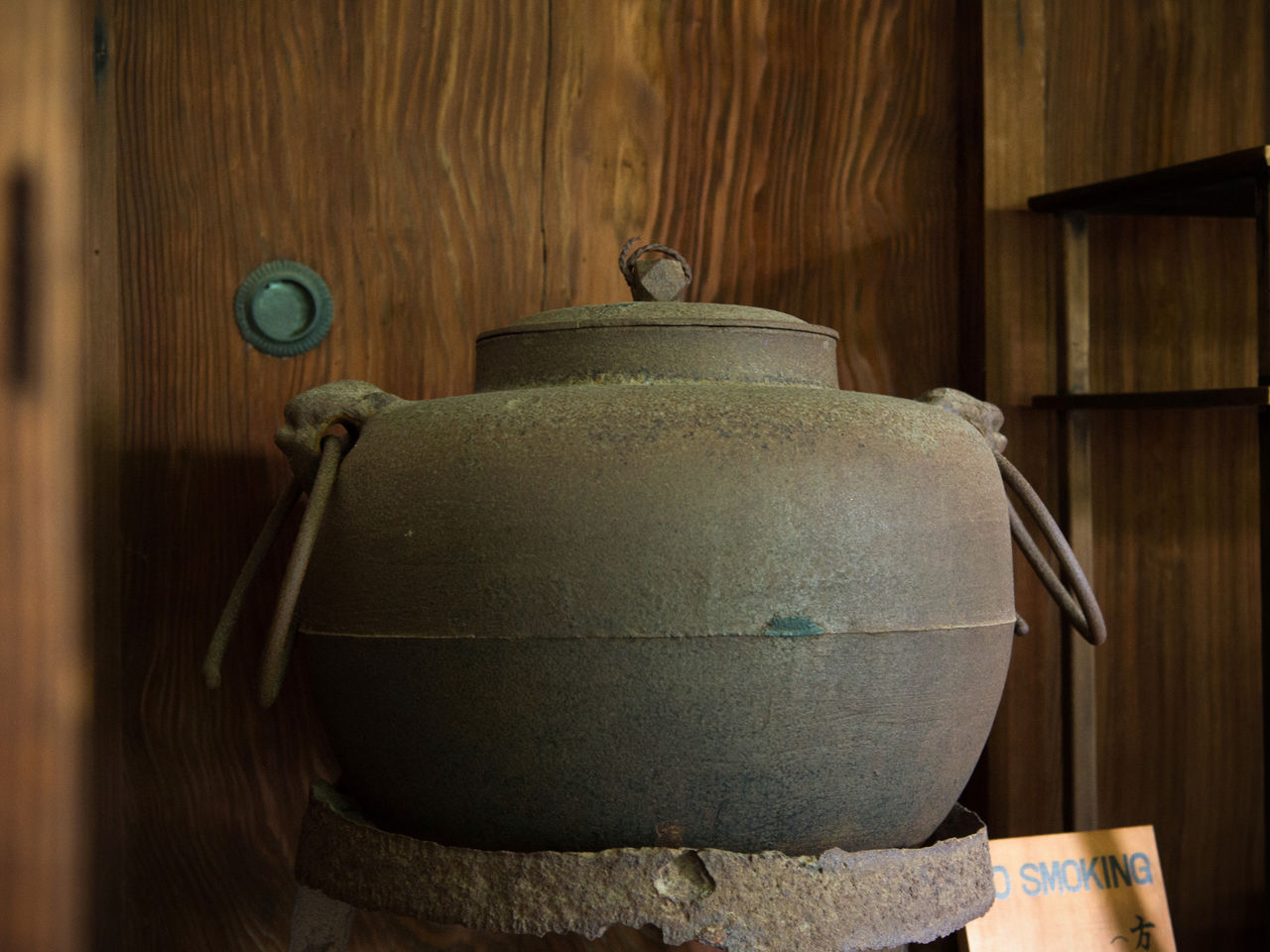 A kettle used at the Daitokuji tea party held by Hideyoshi in 1585.
A kettle used at the Daitokuji tea party held by Hideyoshi in 1585.
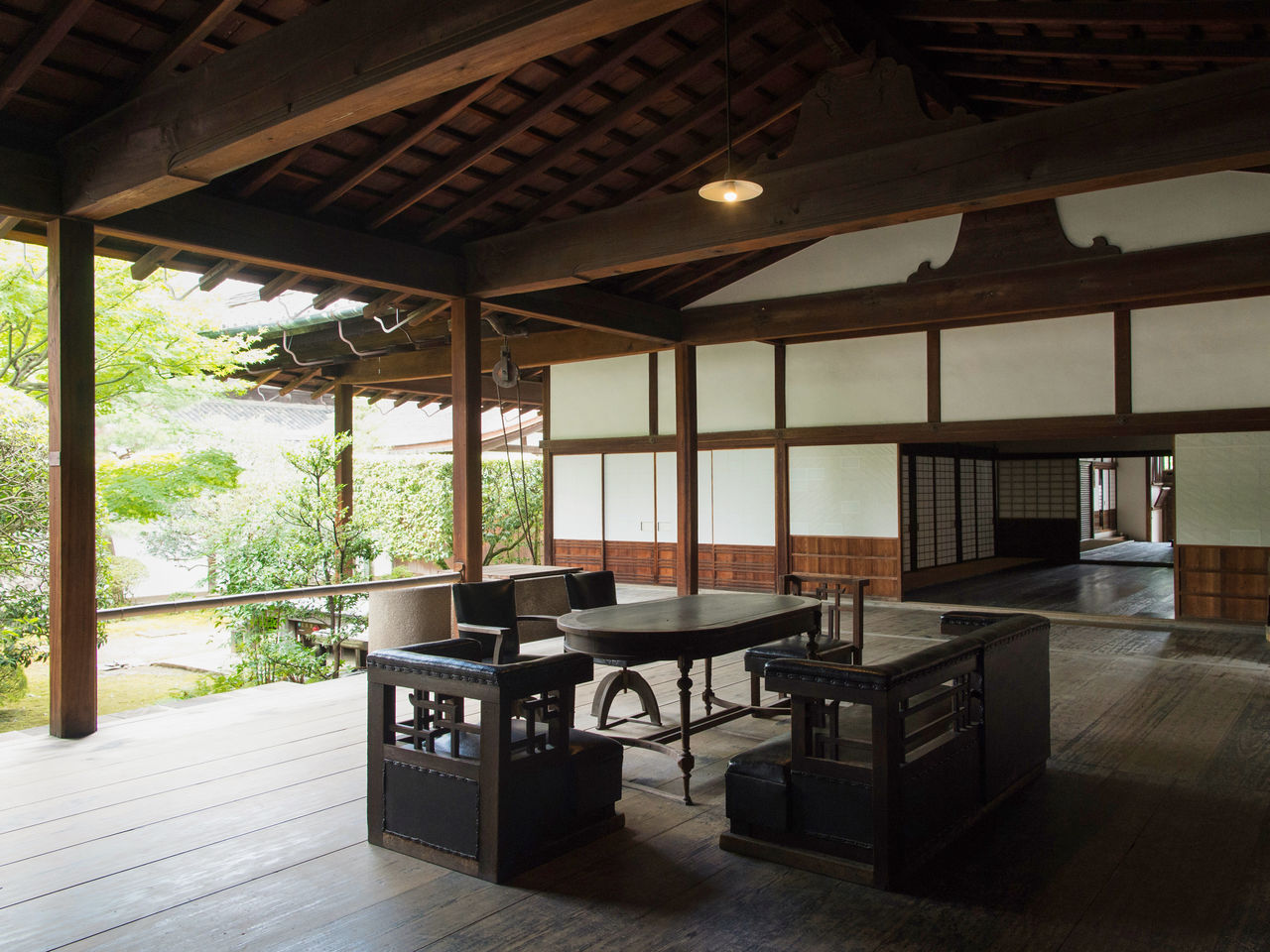 The table and chairs prepared for a visit by Empress Teimei.
The table and chairs prepared for a visit by Empress Teimei.
The first thing you see upon entering the kuri monks’ quarters to the west of the abbot’s chambers are a series of large cooking hearths. Each year on November 22, the anniversary of Daitō Kokushi’s death, the hearths are fired to cook 7 shō (just over 10 kilograms) of rice.
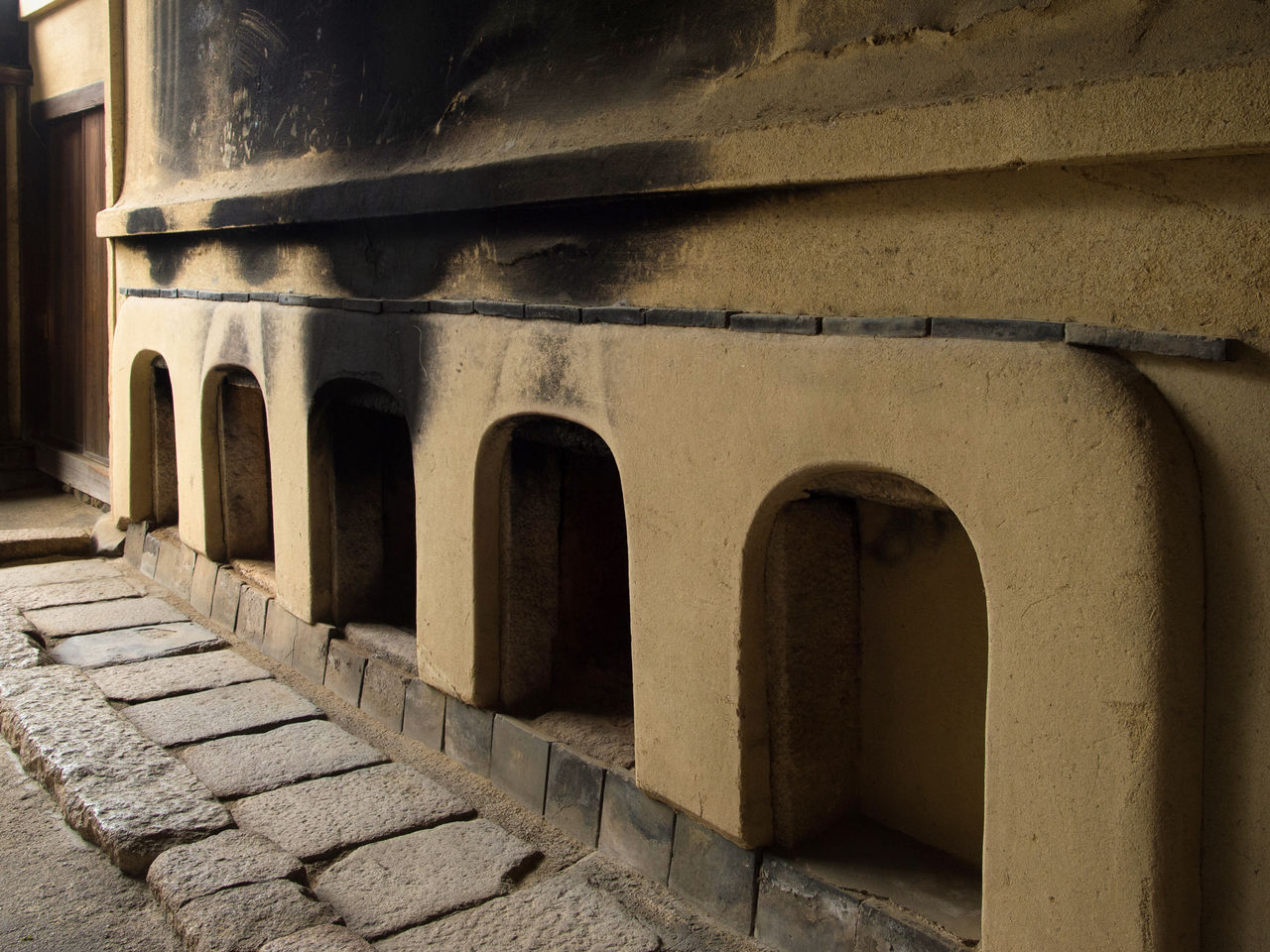 The large kitchen hearths in the kuri monks’ quarters.
The large kitchen hearths in the kuri monks’ quarters.
Look above and you will see large tables stored in the ceiling that were lowered for the monks’ meals; a practical and useful feature typical of a Zen temple.
Here you can get a feeling for what daily life must have been like for the monks who apprenticed at Daitokuji. There is no display intended to appeal to tourists—something that makes this special opening so special. Daitokuji has much to offer its visitors even on a normal day, but the opportunity offered by this special viewing should not be missed. We encourage you to check on the special openings of Daitokuji’s individual subtemples as well.
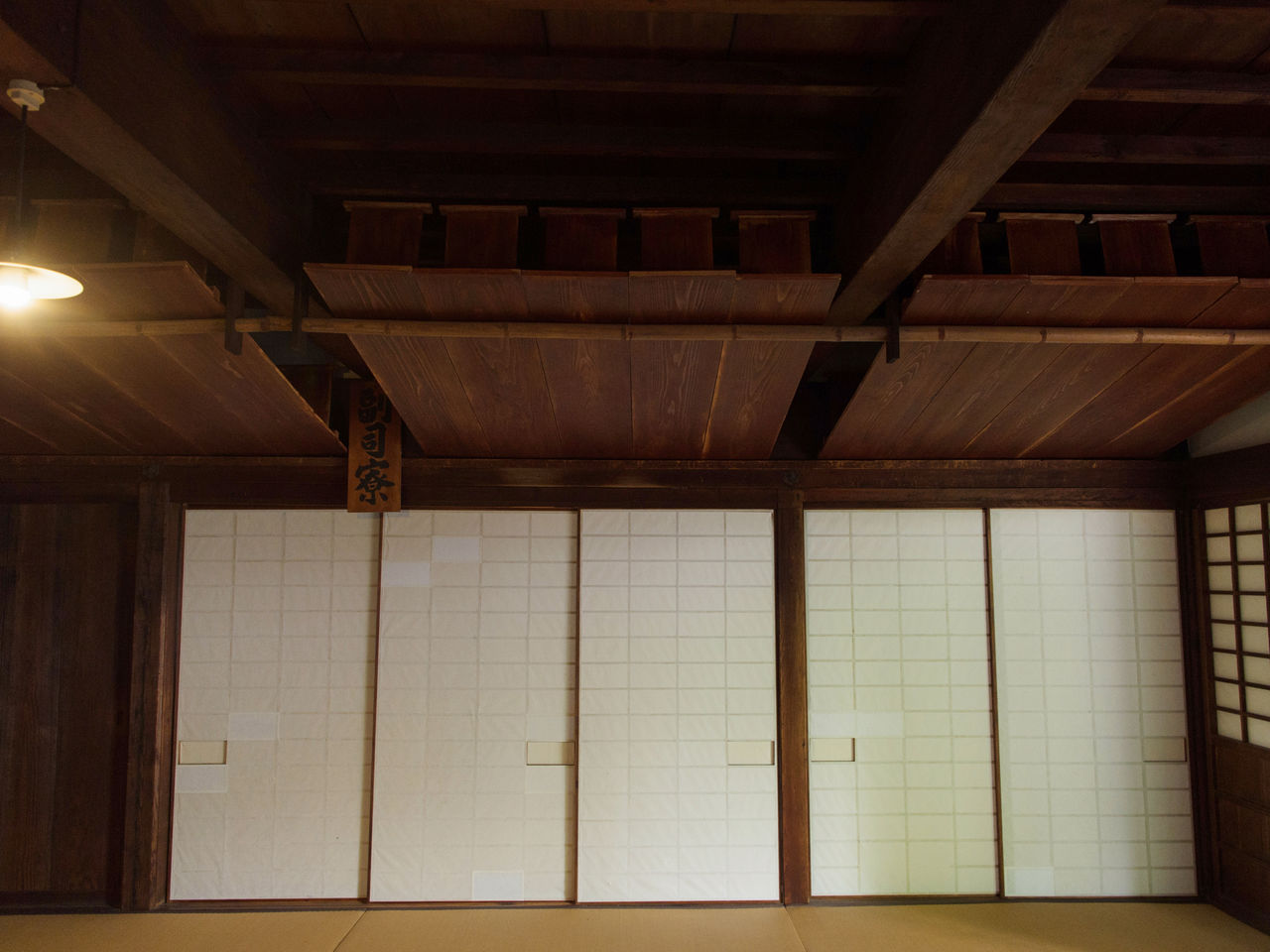 A room used by apprentice monks. Large tables were stored in the ceiling when not in use.
A room used by apprentice monks. Large tables were stored in the ceiling when not in use.
2018 Daitokuji Honbō Special Viewing
- Address: 53 Murasakino-Daitokuji-chō, Kita-ku, Kyoto.
- Opened for viewing: Abbot’s quarters (national treasure), fusuma sliding door paintings by Kanō Tan’yū (important cultural property), Hōjō garden (place of special scenic beauty and historical importance), Karamon gate (national treasure), painting of rakan (arhat disciples of Buddha) by Hasegawa Tōhaku (1539–1610).
- Dates: October 5 to 28, 2018. (Closed October 14. Closed to entry after 11:30 on October 21; open to entry from 13:00 on October 27.)
- Hours: 9:30 to 16:00 (last entry).
- Fees: Adults ¥1,000, junior and senior high school students ¥700, elementary and younger children free (must be accompanied by an adult).
(Originally published in Japanese. Reporting and text by Fujii Kazuyuki, 96Box. Photographs by Kuroiwa Masakazu, 96Box. Banner photo: Dragon and cloud ceiling painting by Kanō Tan’yū.)